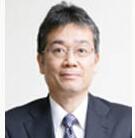
Electronics, Communications and Networks


Biography: Kazuyuki Hirose received his B.S. and M.S., and Ph.D. degrees in electronic Engineering from Waseda University, Japan, in 1981,1983, and 1990, respectively. He joined the Fundamental Research Laboratory, NEC Corporation, in 1983, where he was engaged in research on semiconductor physics such as thin film growth by molecular beam epitaxy (MBE) and electronic structures of semiconductor superlattices or metal/semiconductor interfaces. On the basis of the basic research, he succeeded in the development of a high-electron-mobility transistor (HEMT) of AlInAs/GaInAs/InP stuructures with highest speed among allFET in 1985. Kazuyuki joined the Institute of Space and Astronautical Science (ISAS) in 1995 as an associate professor. He has been engaged in research on basic research for semiconductor devices for space applications such as semiconductor physics, especially insulator/semiconductor interfaces, and radiation effects on semiconductor devices. On the basis of the basic research, he succeeded in the development of radiation hardened MPU with advanced commercial SOI technology. He won the Award of the Minister of Education, Culture, Sports, Science and Technology in 2012. He was a member of space exploration mission “HAYABUSA,” which obtained mineral from an asteroid for the first time.
Speech Title: X-ray Photoelectron Study on Reliability of Advanced MOSFETs
Abstract: Characterization of oxide traps and interface states at nano-scale SiO2/Si interfaces is one of critical issues for achieving high reliability of advanced MOSFETs. X-ray photoelectron spectroscopy (XPS) is a surface science tools with a high potentiality for such a purpose. With an aide of XPS, the authors have revealed several important properties at ultra thin SiO2/Si interfaces including structural transition layer, interface dipole, dielectric constant, oxide traps, and interface states. [1] In this paper, we show that x-ray time-dependent measurement which we developed give us the interfaces states density and the oxide traps density at 1 nm-thick SiO2/Si interfaces. In addition, we introduce that these values depend on Si substrates orientation as well as the values induced by gamma irradiation depend on Si-H density in the SiO2 film.
Keywords: XPS, SiO2/Si, oxide traps, interface states, radiation, Si(100), Si(110), Si(111)
Reference: [1] K. Hirose, H. Nohira, K. Azuma, and T. Hattori, Progress in Surface Science 82(1), pp. 3-54 (2007).